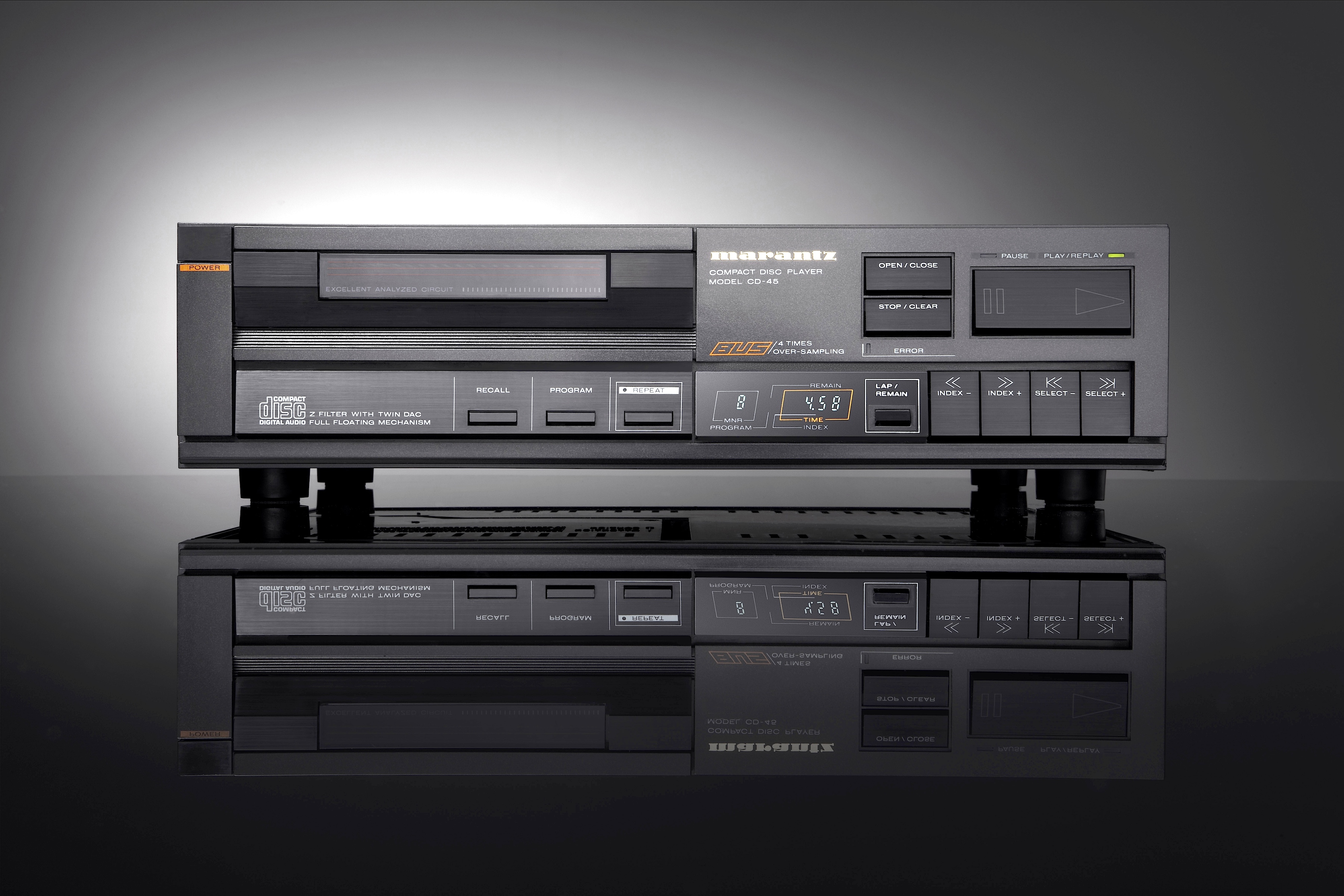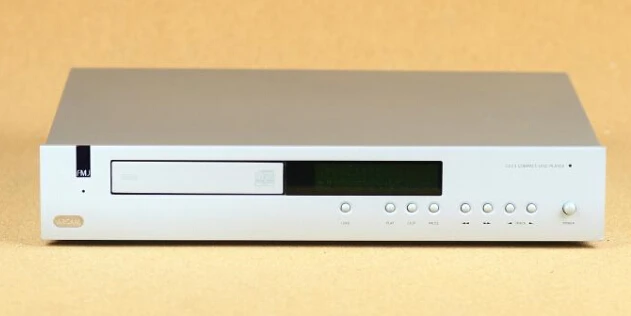Ken Ishiwata, a Marantz brand advocate, says, “When I first heard CD, I was surprised.” “I saw the potential of what this tiny disc could achieve — it was incredible.” What astonished me the most at first was the lack of surface noise, as well as the measurements – I appreciated the clear sine waves, which were so different from analogue’s cacophony. Of course, I knew it wasn’t flawless, but we had to confront reality, which was the mass market, and more than 16-bits at the time was unthinkable. Philips and Sony had to make decisions based on the technology that was available…”
The Philips CD100 and Sony CDP-101 were the first compact disc players to hit the market in 1982. The former had a 14-bit DAC and digital filter with four times oversampling, whereas the latter had a 16-bit non-oversampling architecture. After great praise for Philips’ machine, it was evident that Sony was prevailing in the sales battle. Ken Ishiwata of Marantz confides, “We were getting slaughtered.” Despite having the better of the two systems, users seemed to assume that 16-bit was ‘better’ than 14-bit, which was a major situation for Marantz and its parent Philips. It was rudimentary and incomplete, but it was easy to remember for a buying audience with little knowledge of digital audio.
Given that the CD was at the bleeding edge of technology in the early 1980s, Philips had to choose between a 16-bit, two-times oversampling machine and a 14-bit, four-times design. “I knew four-times oversampling was the only way to proceed,” Ishiwata adds, “but not one Japanese firm did!” They only began to discuss the number of bits after that – 16 is better than 14 – because that was how they communicated. However, if you don’t use oversampling, you’ll have to use a brick wall filter to cut the signal very harshly at the top end, which is heard throughout the audio band. The sound is ruined by having such a high order filter. Because of certain adjustments I made to a (Sony) PCM-F1 digital recorder, I knew this. I’d done some recordings on it before thinking about filtering, so I altered the filter and got drastically different results.”
“We were quite pleased with the outcome. To be honest, competing machines like the Sony CDP-101 were no match!” adds Ishiwata. Despite the fact that the Philips 144 method was clearly superior in practice, it was not commercially viable, thus Philips engineers were entrusted with developing a 16-bit DAC with 4 times oversampling. The TDA1541 went on to become one of the most musical-sounding digital converter chips ever created, and players with it inside were only a few months away from hitting the market in 1986. The issue was that Marantz still had 2,000 of its old (14, TDA1540) CD-45 machines in the storeroom. When the world learned about the new 16-bit replacement, these would be worth pennies. How could they possibly sway them?
“‘What are we going to do with them?’ replied the managing director. Isn’t it possible that we could sell them for £99?’ The marketing manager was adamant about not doing it, but we didn’t have a choice. “Wait a minute,” I said, “I’m going to alter these 14-bit machines and build the most musical CD player available, and then we’re going to sell them for fifty pounds more!” We eventually settled on a two-thousand-unit limited edition run. I made my changes and showed a prototype to a classical musician buddy, who was blown away. So it was released — and within two weeks, they were all sold out. ‘What a pity we didn’t have more machines to modify!’ we exclaimed. That was when the Special Edition was born…”
“After the CD-45LE, we did the 1989 CD-65 and CD-75 Special Editions, and then we had a new model every year after that, such as the CD50-SE, 1991 CD-11 SE, 1992 CD-52SE, 1995 CD-63SE, 1996 CD-67SE, and CD-6000OSE.” Each iteration didn’t get a new chipset until 1989, when Bitstream arrived, because the digital filter was fundamentally sound. However, the mechanisms were changed: the CD-100 had a CDM0, and the CDM1 followed. The original swing-arm, complete with diecast components. Swing arms were the greatest option since they were more trackable than the linear tracking devices used by Japanese manufacturers. However, it was not without flaws. It was bulky, and the position control was handled by servos that required a lot of current, which lowered the noise level. We were able to isolate it, but there were still issues.”
Ishiwata recalls, “We ran with the swing arm transports via the CDM3 and CDM4 straight up to CDM9.” “After that, like the Japanese, it was linear, parallel tracking.” Because they had better (swing arm) transfers and superior (4x oversampling) DACs and digital filters, Philips/Marantz machines always sounded considerably different from their Japanese competitors. Even the S/PDIF chip was superior — the early Philips S/PDIF chip was the best of its kind. Then there was the question of BIMOS vs. CMOS. Moving to smaller, lower-power chips is the trend in the semiconductor industry, and everything, including D-A converters, followed suit. This is a bummer, and one I couldn’t change because these require current information, which BIMOS provides. However, with CMOS, which was used in all CD players by the mid-1990s, it’s just 3v or so – and that low current isn’t suitable for a D-A converter. As a result, you can observe how things have changed.”
Each one sounded sweeter, smoother, warmer, and more seductive than the original version, which wasn’t all that horrible to begin with. Every Marantz Special Edition CD player is worth purchasing; none of them sound poor, and my personal favorite is the CD-63SE – though the KI Signature version is even better. They’re now very cheap used, and they’re a terrific gadget if you want good sound for a low price. Ken Ishiwata summarizes the evolution of CD players over time. “Each new digital development has presented a new challenge – and not always for the better — we’ve had to find better ways of working with technology that has become cheaper rather than better.”







